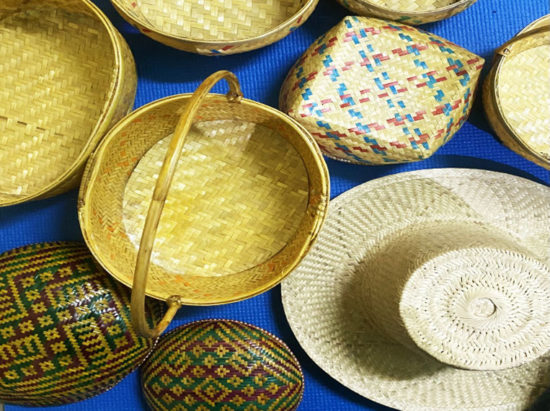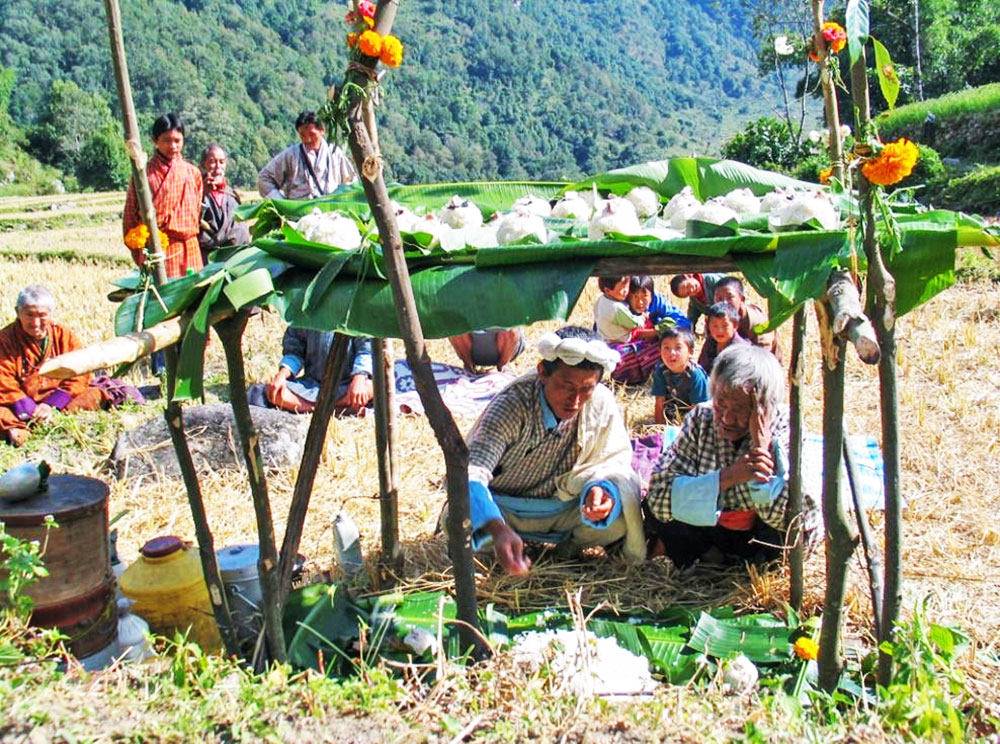Mongar is not only known for being one of the birding hotpots in the country, the district also has a diverse cultural local festival…
A Birding Paradise
Mongar’s pristine subtropical and temperate forests are home to some rarest species, making it a prime birding destination in the world. The dzongkhag’s diverse mountain valleys, which range in elevation from 400 meters in the southern tropical foothills to 4000 meters in the sub-alpine north, are home to about 572 bird species, including the rare and endangered Rufous-necked Hornbill and Blood Pheasants, the majestic Steppe Eagle, and Ward’s Trogon. Due to climate and nature protection, these magnificent birds are thriving in their native habitat.
Numerous other rare and vulnerable birds, including the extremely endangered White-bellied Heron, Bearded Vultures, Himalayan Griffons, Yellow-rumped Honeyguide, and uncommon Oriental Bay-Owl, are also conserved in the district. The roughly 26 kilometers (km) between Sengor and Yonkola are home to some of Asia’s top birding spots. From the gorgeous Satyr Tragopan to the unmatched Ward’s Trogon and the Great Slaty Woodpecker, this region is home to a wide variety of Laughing Thrushes, Parrotbills, and other special bird species.
The western and northeastern parts of Mongar are part of the Phrumsengla National Park and the Bumdeling Wildlife Sanctuary, respectively, yet most of the bird trails and habitats are easily accessible by road or old trekking routes/mule tracks, making the district a paradise for bird lovers and ornithologists.
Mongar and Drametse Tshechu
Some of the most significant cultural events hosted by the dzongkhag are the yearly Mongar Tshechu, which takes place somewhere between the end of November and the beginning of December. Drametse Tshechu is deemed distinct from any other festivals in Bhutan. Drametse Tshechhu is celebrated for three days three times a year: on the tenth day of the fifth month of the Bhutanese calendar (Telda Tshechu), on the tenth day of the sixth month (Tordho Tshechu), and on the thirteenth day of the tenth month (Kangsol Chenmo).
Kharphu Bon Festival
Eastern Bhutan’s most celebrated Kharphu bon festival originates from Tsamang. The rural community organizes this tradition that predates Buddhism in Bhutan. The seven-day event begins on the 7th day of the 4th month of Bhutanese calendar. It draws the community’s attention to assure community wealth, excellent crop, timely rainfall, good health, and promoting couples conceiving, chasing evils, receiving blessings, and preserving an ancient tradition.
Kharam Festival
Kharam literally means curse and the festival centered upon the Kharamshing, a phallus carved out of wood is observed in the villages of Tsamang, Chali, Thridangbi, and a few other places on the 29th day of the 9th month of the Bhutanese calendar. Three types of kharam exist: those that concern one’s land (zhing gi kharam), one’s health (miyi kharam), and those that concern one’s property or livestock (nor gi kharam). It is observed over a three-day period.
Khandro Kongshag Festival
This festival is performed once every three years in Tsakaling village between the 25th and 30th day of the 11th month of the Bhutanese calendar. It is a confession prayer to cleanse defilements, ward off obstacles and misfortunes, and bring prosperity and wellbeing to the communities. The festival attracts many devotees and spectators. Besides mask dances, there is a tradition of villagers going around every household in the locality as far as Takhambi, a seven hour walk from Tsakaling Lhakhang. It is said that the youth in particular spend the entire duration of the festival circumambulating the temple and engaging in courtship.
Lha (HA) Festival
Every year, in the sixth month of the Bhutanese calendar, the Ganglakong Kilikhar community celebrates the Lha (Ha) festival to ensure soil fertility, timely rainfall, healthy cattle, and bumper harvests. Two households – Thogpa and Wogpa – host the festival while the others contribute materials and participate. The main feature of the festival is the singing of a verse called “Wayo”. ‘Wayo Bo’ means “Summon Wayo” while “Wayo Wayo Bjing” is a refrain after each Wayo couplet. Recited without a clear sequence, most couplets contain lewd and ribald phrases, expressions that echo the spirit of the celebration or the shedding of inhibitions in sexual behavior.
Dueza Bon Festival
Remote communities in Kengkhar gewog celebrate Dueza, a bon ritual that takes place once a year. On the 15th day of the ninth lunar month, which occurs in October, locals from far-flung settlements travel to Duezama for a ritual feast with walnuts, steamed tapioca, and alcoholic beverages. The rites are typically performed by the keeper of Dungkar Lhakhang, who wears a crown of marigolds. In ancient times, a live cow was sacrificed as part of the rites, but now a dough effigy shaped like a cow’s head is used instead. The locals will wrap fresh fish in banana leaves and set them on the altar in front of the cattle-head deity as an offering. At the end of the day-long ceremony, the people of the village carry the cattle-head effigy to the Dungkar Lhakhang, where it is burned in a bonfire.
Exquisite Arts and Craft

Jandom (Wooden wine casks): The natives of Kengkhar are known to be adept in the 13 traditional arts and crafts with wood carving – chiefly Jandhom making – taking center-stage of their economic livelihood today. The wooden wine casks are made from the sturdy trunks of a tree locally known as Gongtsinang Shing. Interestingly, despite widespread popularity of the product, the art of Jandhom-making remains known to only the local people of Kengkhar. This valley is also known for its finest furniture production.
Wooden mask making (Babzoo): Mask making skills are drawn extensively from traditional Buddhist blueprints and represent different mythological characters. The masks are used during the performance of ritual dances, mostly during Tshechus or Buddhist festivals. The communities of Kengkhar, Jurmey and Drametse are known for their elaborate mask-carving skills and their products are traded throughout the country and abroad. Their masks are also kept as souvenirs in temples, monasteries and individual home altars.
Cane and Bamboo craft
Tsharzo is the art of weaving cane and bamboo to produce household items like containers and serving plates (bangchung), tshogthrung (vessels for serving food), baekhu (container for wool and threads), and patshadromchung (container for jewelry). The sub-tropical forests of lower Mongar, especially Saling and Gongdue gewogs, have abundant bamboo and cane forest which have led to a thriving local economy dependent on these forest products. The locals here produce an array of colorful bamboo products including baskets, winnowers, mats, hats, quivers, wine containers known as palangs, and bangchungs (food containers).
Nettle-fiber Weaving
A very common plant that grows in Bhutan’s countryside is the stinging nettle (Urtica dioica) whose bark fiber is used to weave exquisite traditional textiles in Bhutan. The tradition is common in the eastern districts of Lhuentse, Pemagatshel, Trashigang and Zhemgang where the age-old craft thrives to this day. Ropes were once made from nettle yarn, which was also used to construct mats, bags, blankets and also traditional bowstring. In today’s market, nettle weavers are in high demand by both locals and visitors for their complex hand-woven jackets, table mats, kiras, and other ordinary household textiles with support from the government and civil society organizations. The region is also known for its skilled weavers, and intricate textile designs and fabrics produced here are considered some of the finest.
Article contributed by Karma Dema, Asst. Economic Development Officer under Mongar Dzongkhag Administration.

This series is sponsored by Ecotourism Project “Mainstreaming Biodiversity Conservation into the Tourism Sector in Bhutan” funded by GEF-UNDP through Tourism Council of Bhutan, RGoB.


